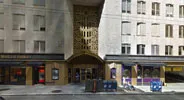Bone Grafting in San Francisco
In the dynamic world of modern dentistry, dental bone grafting has revolutionized how we address jaw bone issues. If you're in San Francisco and need a solution for jaw bone problems, SF Implantology specializes in tailored bone grafting procedures. We enhance both your oral health and confidence. Our comprehensive page explores bone grafting intricacies, types, benefits, and its crucial role in San Francisco's oral health. Bone Grafting in San Francisco is a cornerstone of restorative dentistry, offering transformative solutions for those seeking to restore smiles and well-being. Whether you need grafting for dental implants, tooth socket preservation, or denture stability, our experienced team is here to guide you, helping you regain both your smile and confidence.
What is Bone Grafting?
Dental bone grafting is a surgical procedure designed to restore and augment the jaw bone's density and structure. This transformative technique involves the transplantation of bone tissue to areas where the bone has been compromised or lost. It's a critical tool in the dentist's arsenal, addressing various dental concerns and allowing patients to regain not only their smiles but also their confidence.
What Does Bone Grafting Do?
Bone grafting serves several essential purposes in dentistry:
- Jaw Bone Augmentation: It helps enhance the jaw bone's height and width, providing a solid foundation for dental implants.
- Tooth Socket Preservation: After tooth extraction, bone grafting can prevent the loss of bone mass in the empty socket.
- Support for Dentures: Bone grafts can improve the stability and comfort of dentures, ensuring they stay securely in place.
Comparing Bone Grafting Methods: Choosing the Right Approach for Your Needs
There are various bone grafting techniques, each catering to specific needs and conditions:
-
Autografts: Using the patient's bone tissue, typically
from the hip, rib, or jaw.
- Advantages: Biocompatible, no risk of graft rejection, live bone cells enhance healing.
- Disadvantages: Requires additional surgical site, potential pain, and complications, limited supply.
-
Allografts: Employing bone tissue from cadaver donors,
processed and sterilized.
- Advantages: No need for a second surgical site, reduced discomfort, readily available, storable.
- Disadvantages: Small risk of immune rejection, less effective tissue regeneration.
-
Xenografts: Utilizing bone tissue from different
species, often bovine, after processing.
- Advantages: Readily available, no second surgical site, well-received by the body.
- Disadvantages: Risk of an immune response, less effective tissue integration.
-
Alloplasts: Made from synthetic materials mimicking
natural bone composition.
- Advantages: No risk of immune rejection, precision engineering for specific applications.
- Disadvantages: Limited tissue regeneration potential, may require replacement over time.
The choice of graft material for bone grafting in San Francisco depends on factors such as the patient's medical history, graft site characteristics, procedure goals, and surgeon preferences. The decision is made after careful consideration of these factors.
What Is the Procedure for Bone Grafting in San Francisco?
The bone grafting procedure typically involves the following steps:
- Consultation: Your dentist will evaluate your oral health and determine the need for bone grafting.
- Graft Material Selection: The choice of graft material is made based on your specific requirements and available options.
- Graft Placement: During a minor surgical procedure, the graft material is placed in the targeted area.
- Healing and Integration: Over time, the graft material integrates with your natural bone, promoting new bone growth.
Diet Tips for a Smooth Healing Process After Bone Grafting in San Francisco:
- Soft Diet Significance: After a bone graft, a soft diet is crucial for smooth healing.
- Food Choices for a Soft Diet: Include yogurt, mashed potatoes, applesauce, pudding, oatmeal, and smoothies for easy chewing and swallowing.
- Avoiding Disruptive Foods: Steer clear of hard, crunchy, or chewy foods that could disturb the graft site.
- Tailored Guidelines: Your dentist provides customized dietary instructions for the soft diet phase.
- Staying Hydrated: Adequate hydration with water and non-acidic fluids supports the healing process.
- Gradual Transition to Regular Diet: Progress back to a regular diet as healing advances, guided by your dentist.
- Compliance and Follow-Up: Adhere to dietary recommendations and attend follow-up appointments for a successful recovery.
- Maintaining Oral Hygiene: Ensure good oral hygiene with gentle brushing and rinsing to prevent infections.
- Effective Pain Management: Consult your dentist for effective pain management during eating.
- Overall Well-Being and Recovery: A balanced diet, including soft foods, promotes overall well-being and aids in the recovery from bone grafting surgery.
Post-Surgery Care for Successful Bone Grafting in San Francisco:
Proper post-surgery care is essential for a successful bone grafting procedure. This may involve:
- Medication: Your dentist may prescribe pain relievers or antibiotics to prevent infection.
- Oral Hygiene: Maintain good oral hygiene, taking care to avoid the graft site while brushing and flossing.
- Follow-up Appointments: Attend follow-up appointments to monitor your progress and ensure a smooth recovery.
Exploring the Risks and Benefits of Bone Grafting in San Francisco:
Bone grafting in San Francisco offers significant advantages, including reinforced jaw strength, improved dental implant success, and support for dental prosthetics. However, it comes with potential risks, such as infection and graft failure. Here's a brief overview:
Benefits of Bone Grafting:
- Jaw Strength: Enhances jawbone strength, crucial for implant stability.
- Implant Success: Improves success rates for dental implants.
- Prosthetic Support: Provides structural support for bridges and dentures.
Risks of Bone Grafting:
- Infection: Minimal risk, managed through hygiene and care.
- Graft Failure: Possible in some cases due to various factors.
Consultation with Your Dentist:
Before undergoing a bone grafting procedure in San Francisco, it's crucial to have a thorough consultation with your dentist. During this consultation, your dentist will evaluate your oral health, discuss your specific case, and address any concerns or questions you may have.
What is the Sinus Lift Procedure for Dental Implants in Bone Grafting:
- Assessment: Before the procedure, your dentist assesses upper jawbone density and height using X-rays or CT scans.
- Procedure: During the sinus lift, a small upper jawbone opening is created, gently lifting the sinus membrane.
- Grafting: The space is filled with bone graft material from your body (autograft), a donor (allograft), or synthetic material (alloplast) to stimulate new bone growth.
- Healing: Over time, your body integrates the graft, forming new bone, a process taking several months.
- Dental Implants: Once new bone develops sufficiently, dental implants secure crowns or bridges.
Elevate Your Oral Health with Bone Grafting in San Francisco:
Dental bone grafting in San Francisco is a transformative procedure that has the power to restore not only your jaw's health but also your confidence in your smile. Whether you require bone grafting to support dental implants in San Francisco or address other oral health concerns, it's a testament to the remarkable advancements in modern dentistry. If you're considering bone grafting, consult with a skilled dental professional in San Francisco to embark on your journey toward improved oral health, successful dental implants, and a brighter, more confident smile. Call us at 415-319-8181 to get started.
Frequently Asked Questions on Bone Grafting in San Francisco
How Painful Is the Bone Grafting Procedure?
Our oral surgery office in San Francisco utilizes advanced anesthesia and a personalized pain management approach to minimize
discomfort during bone grafting. Pain levels post-surgery vary, but
our dedicated team ensures your recovery is as comfortable as
possible.
What Is the Healing Time After Bone Grafting?
Healing from bone grafting varies, typically ranging from three to nine months, influenced by the graft's size and location, and your health.
Adherence to our oral surgeon's care instructions is essential for a healthy recovery. Our skilled team provides customized guidance
throughout your healing journey.
What Occurs During Dental Bone Graft Surgery?
During a dental bone graft procedure, the area to receive the graft is meticulously prepared. We then place and secure the bone graft material,
which may be sourced from your own body, a donor, or synthetic alternatives. Over the following months, the site heals as new bone forms
and integrates with the graft material. Our team will closely monitor your progress through follow-up appointments to ensure optimal healing
discuss further treatment if necessary.
What Can I Expect After a Dental Bone Graft?
It's normal to experience some pain, swelling, and bruising, which generally subside within a few days. Your oral surgeon will prescribe
medications to ease discomfort and prevent infection. Small bone fragments at the graft site are common but should not be a cause for concern.
For any issues, our experienced oral surgeon in San Francisco is here to support you.
What Are the Advantages of Bone Grafting?
Bone grafting boosts oral health and aesthetics by enhancing bone density and providing a solid base for implants. It restores facial structure
and prevents further bone loss, preserving surrounding teeth and contributing to long-term oral functionality.
Are There Alternatives to Bone Grafting?
Alternatives include ridge expansion, sinus lifts, short or zygomatic implants, and mini dental implants, along with traditional solutions like
bridges or dentures. A detailed consultation will help identify the most suitable option for your oral health needs.
What Are the Potential Risks or Complications Associated With Bone Grafts?
While safe, bone grafts carry potential risks such as infection, pain, swelling, the possibility of graft rejection or failure, and nerve damage.
Monitoring and timely reporting of any unusual symptoms to your oral surgeon are crucial for addressing complications promptly.
If you're considering bone grafting or have further questions about this procedure, don't hesitate to contact our oral surgery office in San Francisco.
Our experienced team is committed to providing high-quality, personalized care to ensure the best outcomes for your oral health. Reach out
today to schedule a consultation and learn how we can support your journey toward improved dental wellness and aesthetics.

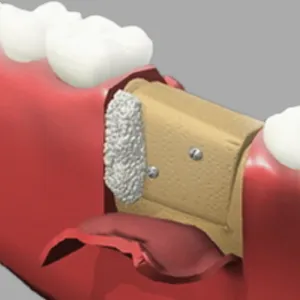
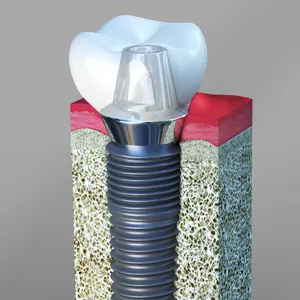 Dental Implants
Dental Implants
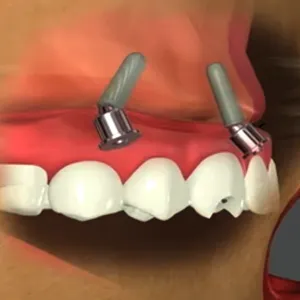 Teeth In An Hour
Teeth In An Hour
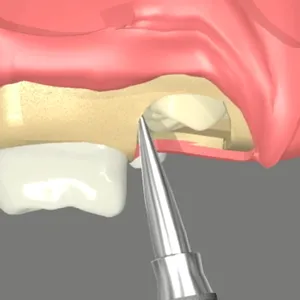 Wisdom Teeth
Wisdom Teeth
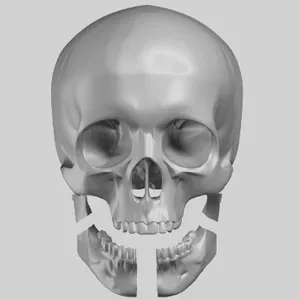 Facial Trauma
Facial Trauma
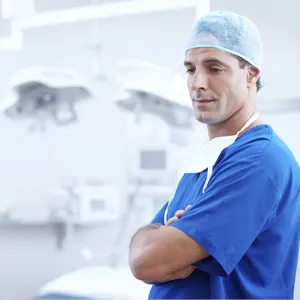 Other Services
Other Services
